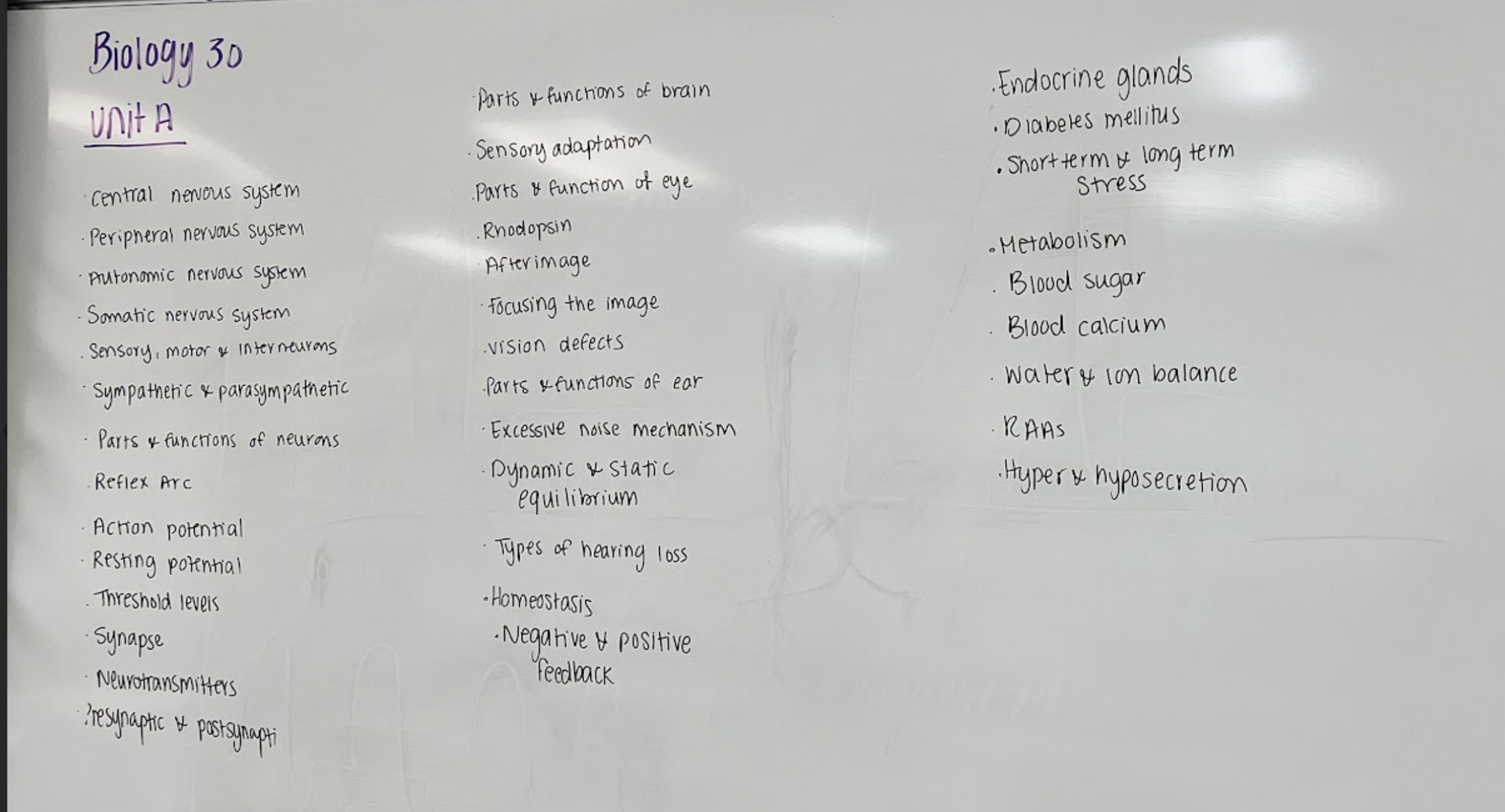
Central nervous system
Peripheral nervous system
Autonomic nervous system
Somatic nervous system
Sensory, motor, interneaurons
Sympathetic and parasympathetic
Parts and functions of neuron
Reflex arc
Action potential
Resting potential
Threshold levels
Synapse
Neurotransmitters
Parts and functions of brain
Sensory adaptation
Parts and functions of eye
Rhodospin
Afterimage
Focusing the image
Vision defects
Parts and functions of the ear
Excessive noise mechanism
Dynamic and static equilibrium
Types of hearing loss
Homeostasis
Negative and positive feedbacks
Endocrine glands
Diabetes mellitus
Long and short term stress
Metabolism
Blood sugar
Blood calcium
Water and ion balance
RAAS
The nervous system is divided into the central nervous system (CNS) and the peripheral nervous system (PNS). The CNS comprises the brain and spinal cord, while the PNS includes all other neural elements. The autonomic nervous system controls involuntary functions and consists of the sympathetic (fight or flight) and parasympathetic (rest and digest) systems. The somatic nervous system governs voluntary movements. Neurons are the basic units of the nervous system, consisting of sensory, motor, and interneurons. The reflex arc is a neural pathway that mediates a reflex action. Action potentials are the electrical impulses that transmit signals along neurons, whereas resting potential refers to the baseline state of a neuron. Synapses are the junctions where neurotransmitters transmit signals between neurons. The brain has various parts that perform specific functions, and sensory systems adapt to stimuli to maintain homeostasis.